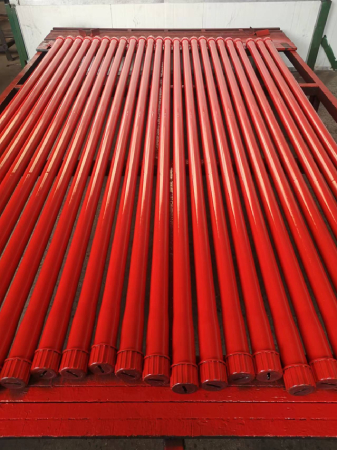- Afrikaans
- Albanian
- Amharic
- Arabic
- Armenian
- Azerbaijani
- Basque
- Belarusian
- Bengali
- Bosnian
- Bulgarian
- Catalan
- Cebuano
- Corsican
- Croatian
- Czech
- Danish
- Dutch
- English
- Esperanto
- Estonian
- Finnish
- French
- Frisian
- Galician
- Georgian
- German
- Greek
- Gujarati
- Haitian Creole
- hausa
- hawaiian
- Hebrew
- Hindi
- Miao
- Hungarian
- Icelandic
- igbo
- Indonesian
- irish
- Italian
- Japanese
- Javanese
- Kannada
- kazakh
- Khmer
- Rwandese
- Korean
- Kurdish
- Kyrgyz
- Lao
- Latin
- Latvian
- Lithuanian
- Luxembourgish
- Macedonian
- Malgashi
- Malay
- Malayalam
- Maltese
- Maori
- Marathi
- Mongolian
- Myanmar
- Nepali
- Norwegian
- Norwegian
- Occitan
- Pashto
- Persian
- Polish
- Portuguese
- Punjabi
- Romanian
- Russian
- Samoan
- Scottish Gaelic
- Serbian
- Sesotho
- Shona
- Sindhi
- Sinhala
- Slovak
- Slovenian
- Somali
- Spanish
- Sundanese
- Swahili
- Swedish
- Tagalog
- Tajik
- Tamil
- Tatar
- Telugu
- Thai
- Turkish
- Turkmen
- Ukrainian
- Urdu
- Uighur
- Uzbek
- Vietnamese
- Welsh
- Bantu
- Yiddish
- Yoruba
- Zulu
Exploring the Applications and Importance of Tubing and Casing in Oil and Gas Operations
Understanding Tubing and Casing in Oil and Gas Operations
In the oil and gas industry, the extraction of hydrocarbons from the earth involves intricate processes and hardware, among which tubing and casing are crucial components. Both serve essential roles in ensuring safe, efficient, and productive operations. This article delves into tubing and casing, their functions, differences, and importance in well construction and maintenance.
Casing refers to the series of large-diameter pipes that are installed in the wellbore to support the walls of the hole. These pipes serve multiple purposes, such as preventing the collapse of the wellbore, isolating different pressure zones, and protecting groundwater from contamination due to hydrocarbons. Casing is typically made from steel and is installed in sections, starting from the surface and going down to various depths based on geological conditions.
The installation of casing involves drilling to a certain depth and then running the casing pipe into the well. Once positioned, the space between the casing and the wellbore is filled with cement, which hardens to provide structural integrity and isolation. This process is known as cementing and is critical for ensuring that fluids do not migrate from one zone of the well to another, thereby maintaining the integrity of the reservoir and protecting the environment.
In contrast, tubing is the smaller-diameter pipe placed inside the casing. The primary function of tubing is to transport the oil or gas from the reservoir to the surface. Tubing is designed to withstand high pressures and corrosive environments typical of oil and gas production. Unlike casing, tubing can be removed and replaced without disturbing the entire structure of the well. This feature is particularly valuable for maintenance and workover operations, where producing wells require servicing or replacement parts to optimize output.
tubing and casing

The differences between tubing and casing extend beyond their dimensions and functions. Casing is primarily concerned with the structural stability of the well, while tubing is focused on the flow of hydrocarbons. Casing typically remains in place for the life of a well, while tubing can be subjected to wear and may require periodic replacement due to fatigue or corrosion.
The selection of both tubing and casing is influenced by various factors, including the depth of the well, expected pressures, temperature conditions, and the type of hydrocarbons being produced. Engineers and geologists work together to determine the appropriate specifications that align with production goals and safety standards. The right materials and designs are critical to minimize risks such as blowouts, leaks, and environmental contamination.
Moreover, the advancements in technology have greatly enhanced the design and manufacturing processes of tubing and casing. New materials and construction techniques have been developed to ensure better performance under extreme conditions. Engineers can now utilize sophisticated software to simulate different scenarios, optimizing the tubing and casing design for specific well environments.
In conclusion, tubing and casing are integral components of oil and gas extraction, providing both structural integrity and flow capabilities. Understanding their roles, functions, and the differences between them is vital for safe and efficient operations in the energy sector. As the industry continues to evolve, ongoing research and innovation will further refine these essential components, ensuring sustainable practices that meet the global energy demands of tomorrow.
-
Tubing Pup Joints: Essential Components for Oil and Gas OperationsNewsJul.10,2025
-
Pup Joints: Essential Components for Reliable Drilling OperationsNewsJul.10,2025
-
Pipe Couplings: Connecting Your World EfficientlyNewsJul.10,2025
-
Mastering Oilfield Operations with Quality Tubing and CasingNewsJul.10,2025
-
High-Quality Casing Couplings for Every NeedNewsJul.10,2025
-
Boost Your Drilling Efficiency with Premium Crossover Tools & Seating NipplesNewsJul.10,2025







